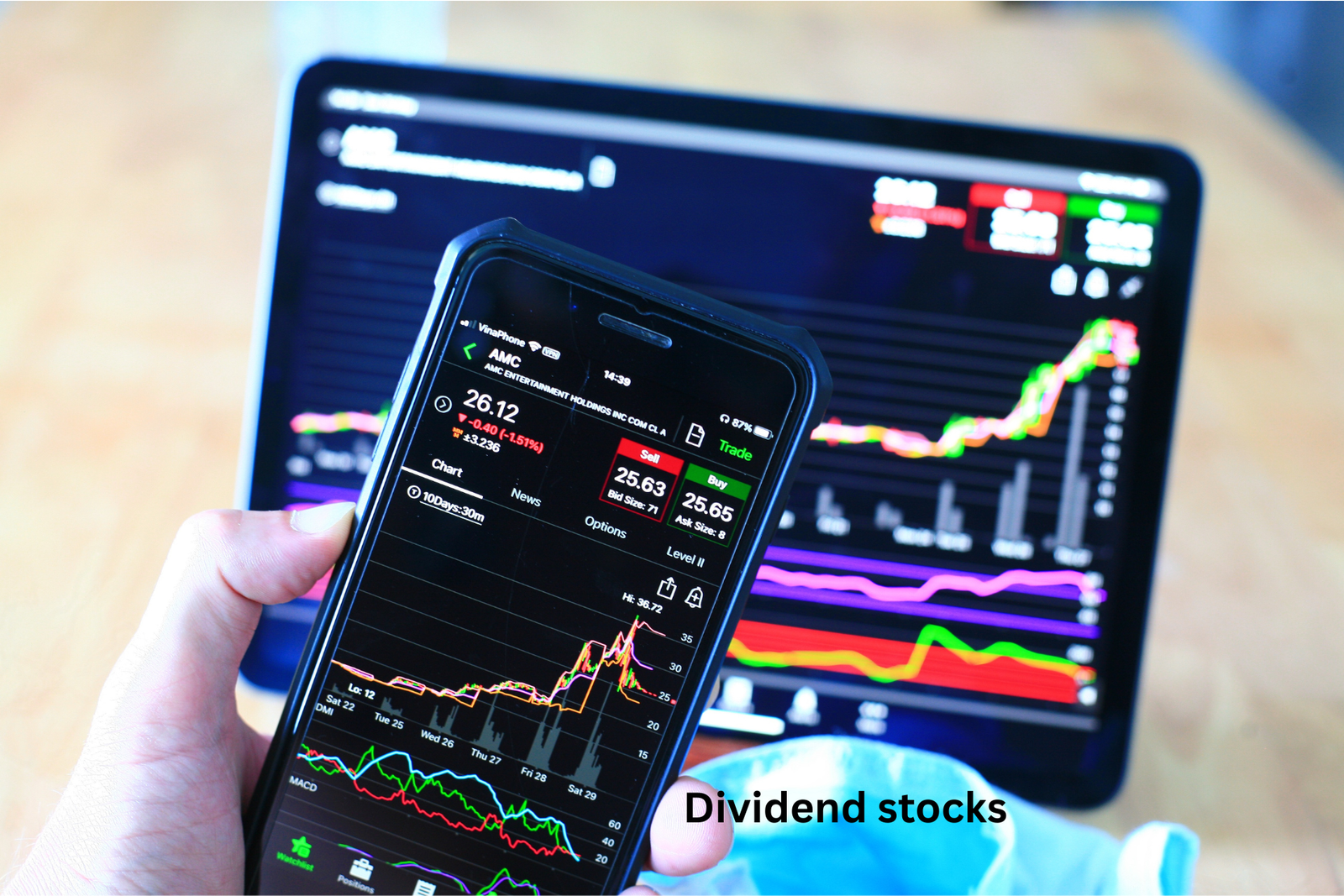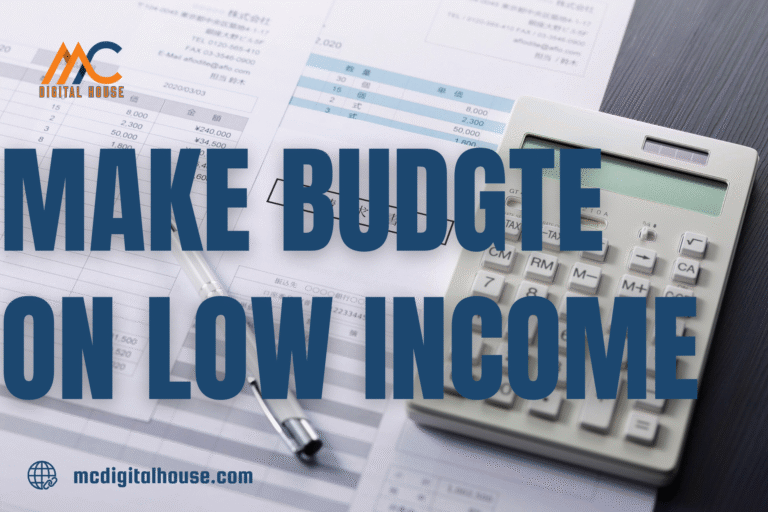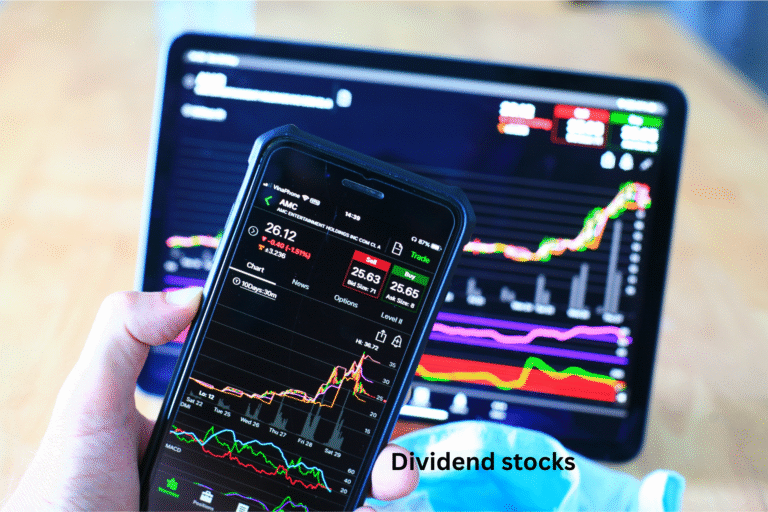Top dividend stocks 2025: Where US investors should look
Top dividend stocks 2025
Dividend investing remains a popular strategy for many Americans who appreciate a stable income stream along with capital appreciation over the long term. In 2025, dividend-issuing stocks are once again in focus as U.S. investors are balancing inflation concerns, interest rate changes, and market gyrations.
This article will provide an in-depth overview of the best dividend stocks in 2025, how dividend stocks fit into an investment strategy, and what considerations and risks are involved. Whether a retiree is looking for passive income or someone younger starting to build savings for the long term, dividend stocks can play an important role in the wealth management process.
What are dividend stocks?
Dividend stocks are stocks of companies that return part of their profits to their shareholders regularly, called dividends, usually quarterly. Companies that pay dividends tend to be established companies that are financially strong with stable and predictable cash flows; it is also important to note that there are many companies that do not pay dividends.
For U.S. investors, dividend stocks can be an important wealth accumulation tool given that they produce:
- Predictable and reliable income – a stream of cash that retirees typically rely on, or reinvest in additional shares for younger generations.
- Reinvestment income opportunities – reinvesting dividends can then compound returns over many years.
- Stability – dividend payers tend to be established and not as volatile.
Why dividend stocks matter in 2025?
The U.S. economy in 2025 is influenced by many possibilities and challenges. Inflation is moderating, but still above long-term averages. The Federal Reserve is tactically increasing interest rates, and corporate profits are healthy in some sectors, while quite challenged in others.
This is why dividend stocks are particularly important at this time:
- Income with volatility: Even when stock prices fluctuate, dividends are returns on your investment.
- An alternative to bonds: While interest rates remain elevated, they are still at some of their lowest levels in history, and many dividend yields far exceed those of government bonds, remaining low in this environment.
- Defensive play: Consumer staples companies, utilities, and healthcare companies are reaching out to pay dividends even during a slowdown.
- Inflation protection: Companies with a history of increasing dividends offer the best opportunity for investors to maintain their purchasing power as we all adjust to a higher cost of living.
Key factors influencing dividend investing in 2025
To find the best dividend stocks in 2025, investors should be tuned in to several macro and company-specific variables: Key factors influencing dividend investing in 2025
1. Federal Reserve Policy
The appetite of investors for dividend stocks will be influenced by interest rate changes. If bond yields increase, there is always a risk that dividend-payers will compete, and people’s personal interest in investing in stocks will decline. Nevertheless, once rates stabilize, dividend-paying equities perform while providing investors with more attractive dividends.
2. Corporate profitability
Firms with solid levels of free cash flow and low debt levels are generally better positioned to sustain or increase dividends. For 2025, sectors such as energy, technology, and healthcare remain in the top spot.
3. Global economic conditions
Slowing global expansion, supply chain recalibrations, and geopolitical conflicts can impact revenue streams and, therefore, dividend payments.
4. Sector-specific trends
- Energy continues to benefit from relatively stable oil demand.
- Healthcare continues to do well amid aging populations.
- Utilities remain steady due to constant demand.
- Technology offers fresh dividend growth as large companies such as Microsoft and Apple increase dividends.
The top dividend stocks in 2025
Below are some of the best dividend stocks for U.S. investors this year. Each exemplifies financial strength, consistency of payment, and resiliency.
1. Johnson & Johnson (JNJ)
- Sector: Healthcare
- Dividend yield (estimated for 2025): ~3%
- Highlight: Over 60 years of consecutive dividend increases.
- Rationale: J&J is a Dividend King, which means it has raised its dividend for at least 50 years in a row. With a broad income-producing operating portfolio including pharmaceutical, consumer health, and medical device companies, J&J is a solid choice for an income-oriented investor.
2. Procter & Gamble (PG)
- Sector: Consumer staples
- Dividend yield: ~2.6%
- Highlight: Brands include Pampers, Gillette, and Tide.
- Rationale: P&G is a strong company in all economic environments. Consumer staples will always be necessary, and they are able to raise prices without losing sales.
3. ExxonMobil (XOM)
- Industry: Energy
- Dividend yield: ~3.4%
- Key insight: One of the largest energy corporations in the world.
- Why it’s appealing: Exxon has strong oil and gas prices along with a disciplined capital allocation strategy that allows for attractive dividends. The company has a history of providing consistent returns to shareholders, even during tougher economic conditions.
4. PepsiCo (PEP)
- Industry: Consumer staples
- Dividend yield: ~2.9%
- Key insight: Has increased dividends for 50 consecutive years.
- Why it’s appealing: PepsiCo is broader than just soft drinks. With brands such as Doritos, Quaker Oats, and Gatorade, it has diversified revenue sources that ultimately help it continue to grow dividends.
5. Realty Income (O)
- Industry: Real Estate (REIT)
- Dividend yield: ~5.5%
- Key insight: Has been called “The Monthly Dividend Company.”
- Why it’s appealing: Realty Income is unique because it pays dividends every month as opposed to quarterly. The company invests in commercial properties such as supermarkets and pharmacies, providing secure and consistent cash flows.
6. Verizon Communications (VZ)
- Industry: Telecommunications
- Dividend yield: ~6.5%
- Key insight: High dividend yield amongst the large-cap companies in the United States.
- Why it’s appealing: While it may be true that Verizon’s growth has diminished, it is still considered to be one of the best options for an investor seeking passive income. Their market share, coupled with reliable cash production, allows Verizon to consistently generate large payouts.
7. Microsoft (MSFT)
- Industry: Technology
- Dividend yield: ~0.7%
- Highlight: A very strong balance sheet by nearly any metric.
- Why it checks out: Microsoft is not known for yielding big amounts of cash to shareholders, but its dividend has grown at a rapid pace while also witnessing a sizable boost in revenue driven primarily by cloud computing and artificial intelligence. Microsoft has both growth and income for investors.
8. Apple (AAPL)
- Industry: Technology
- Dividend yield: ~0.6%
- Highlight: Tremendous dividend growth since 2012.
- Why it checks out: Apple has very large cash reserves and a dominant worldwide footprint. Dividend yields are modest for its stock price, but the growth rate of the dividend is high in comparison; it is a great hold for the long-term investor.
Comparing dividend yields by sector
Investors have some questions around which industries are judging yields collectively. Often, a good start is to see what trends are in place for approximately 2025:
- Energy – High dividend yield 3–6%; typical cyclical risk exists.
- Consumer Staples – Average dividend yield 2–3%; stable.
- Utilities – Average dividend yield 3–5%; consistent demand.
- Health Care – Average dividend yield 2–3%; defensive.
- Technology – Lower dividend yield 0.5-1%; better growth prospects.
- REITs – High dividend yield 4–7%; predominantly driven by real estate rents.
How to choose the best dividend stocks?
The stock with the highest yield – good dividend investors dig a little deeper:
- Dividend Payout Ratio: Payout ratios around 40–60% are typically considered healthy. The higher the payout ratio, the greater the risk of cuts in the future.
- Dividend Growth Track Record: You want companies that have increased their dividend every single year for the last ten years at a minimum.
- Balance Sheet Strength: Low debt and cash flow generation go a long way in dividend sustainability.
- Economic Moat: Companies with attractive and well-known brands, or those with large market shares, tend to be safer bets.
- Dividends Reinvestment Opportunities: The ability to reinvest your dividends into a Dividend Reinvestment Plan (DRIP) generates compounding returns over time.
Dividend growth vs. high yield: Which is better?
In the US, we are often faced with the choice of high-yield stocks and Dividend-growth stocks:
- High yield: for example, companies like Verizon or Realty Income give immediate income but may not provide as much growth for the future.
- Dividend growth: Companies like Apple or Microsoft provide a smaller dividend today, but it grows quickly, allowing you to have a larger income further down the road.
A well-distributed portfolio should include both types of stocks.
Risks of dividend investing in 2025
While there are many appealing aspects to dividend stocks, several risks still exist:
- Dividend cuts: When companies experience slowdowns in their business, dividends are frequently cut (e.g., various energy companies when oil prices crash).
- Sector concentration: Overexposure to one industry (such as energy) can expose you to extra risk.
- Market downturns: Stock prices can drop even though the dividend stays the same and is unaffected.
- Tax implications: Dividends have to be paid US Federal tax, even though some qualified dividends could be taxed at more favorable rates.
Strategies for U.S. investors in 2025
Here are some recommendations for building a dividend portfolio in 2025.
1. Core and satellite
- Have a few dividend stalwarts (e.g., Johnson & Johnson, Procter & Gamble) that are considered core.
- Then, add some smaller, yielding stocks (e.g., Realty Income, Verizon) to form your satellites.
2. Reinvestment focus
- Set up Dividend Reinvestment Plans (DRIPs) for automatic reinvestment of dividends.
3. Mix growth with yield
Consider growth stocks (e.g., Microsoft, Apple) to complement high yielders (e.g., Verizon, Realty Income).
4. ETF approach
- If you prefer not to manage a portfolio, you could consider a dividend ETF (e.g., Vanguard Dividend Appreciation ETF (VIG) or iShares Select Dividend ETF (DVY)) to provide you with diversification.
Conclusion
In 2025, dividend stocks continue to represent a staple asset class for U.S. Investors who want steady income, resilience, and long-term growth. There are diversified options in stocks from reliable companies like Johnson & Johnson, Procter & Gamble, and ExxonMobil, and from technology companies like Microsoft and Apple.
The secret is to be diversified, to reinvest, and to select the right stocks. Investors with varied yields and dividend growth can capitalize on their portfolios so that their investments will be reasonably stable through market swings and are conceptually constructs of wealth.
Dividend investing is not a get-rich-quick scheme; rather, it is a long-term investment approach. That said, if you are an American looking to increase your income and safeguard your financial future, the top dividend stocks of 2025 can be worthy of consideration.







